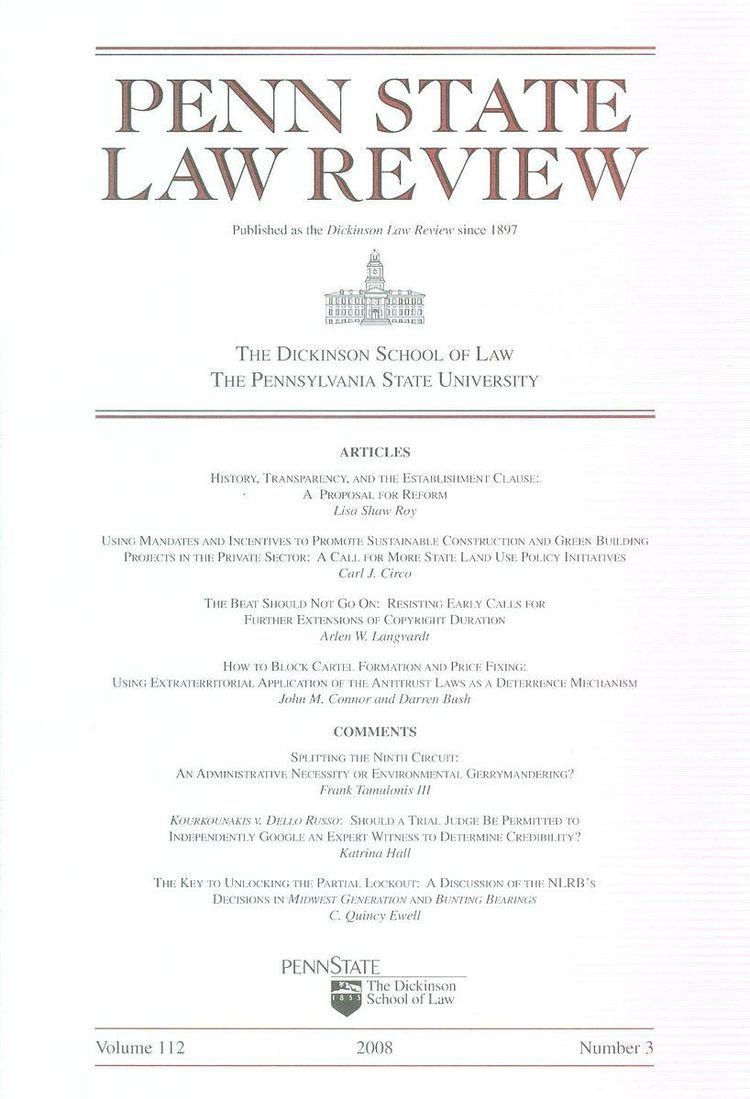Abbreviated title (ISO 4) Penn. St. L. Rev. Frequency Quarterly | Publication history 1897 to present | |
 | ||
Publisher Penn State University, Dickinson School of Law (United States) | ||
The Penn State Law Review is a legal periodical. It was founded in 1897 as The Forum and was later renamed the Dickinson Law Review. When the Dickinson Law School merged with Penn State University in 2003, the name of the periodical was changed to the Penn State Law Review.
Contents
The Penn State Law Review is one of three legal periodicals published by the Penn State Law School and one of the oldest law journals in the United States. The two other Penn State journals are Penn State Journal of Law and International Affairs and The Yearbook on Arbitration and Mediation. The Law Review is a general-interest journal that is run entirely by students. As a general-interest journal, the Penn State Law Review publishes in the broad range of legal scholarship and does not limit submissions by any specific topic. The journal publishes four times annually. Generally, each issue includes several legal articles and comments. The articles are written by legal scholars and practitioners, and the comments are written by Penn State Law students. Every year, as part of a stringent selection process, the journal evaluates a host of submissions.
Admissions
The Penn State Law Review extends annual membership invitations to rising second-year students at the conclusion of the spring semester. Of the available membership invitations, one-half are based upon grades and the other half are based upon evaluations of the write-on competition, which commences during the summer.
Duties of associate editors
The second-year law students participate as associate editors of the Law Review. Duties of the associate editors include checking sources cited in the articles pending publication to ensure the sources' compliance with the most recent edition of the Bluebook. The associate editors are also required to produce a legal comment of publishable quality. Once complete, the student-written comments are reviewed and graded by the Law Review comments editors. Subsequently, some of the comments are selected for publication in the journal.
The editorial board
The Penn State Law Review is managed by an editorial board. Following successful completion of their duties as associate editors, second-year law review members may choose to run for a position on the Law Review's editorial board. The Penn State Law Review editorial board presently consists of the following positions: editor-in-chief, managing editor, executive articles editor, executive comments editor, articles editors, comments editors, research editor, and online editor. The editorial board comprises the managing body of the journal, and day-to-day law review operations are carried out by the efforts of the editorial board. Third-year non-editorial board members serve as senior editors and act, in part, as advisers to the associate editors.
The Online Companion
Penn State Law Review also publishes an Online Companion called Penn Statim. Penn Statim contains the Law Review's printed content as well as exclusive online scholarship.
